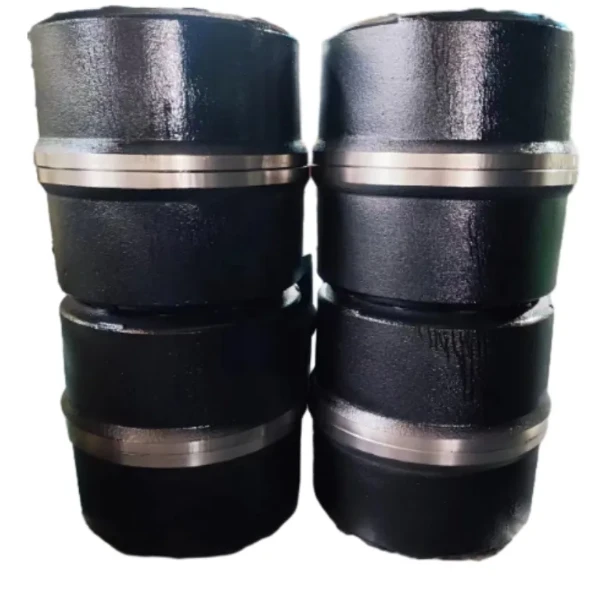Fix Seized Drum Brakes After Sitting Quick Release & Prevention
- The Science Behind Seized Drum Brakes After Storage
- Technical Analysis: How Environmental Factors Impact Brake Mechanics
- Advanced Materials Compared: Manufacturer Brake Component Benchmarks
- Vehicle-Specific Solutions for Different Parking Conditions
- Case Study: Long-Term Aircraft Equipment Storage Success Story
- Preventative Maintenance Schedule for Seasonal Vehicles
- Essential Steps When Confronting Rear Drum Brakes Locked Up After Sitting

(drum brakes seized after sitting)
The Science Behind Drum Brakes Seized After Sitting
Vehicle owners frequently encounter drum brakes locked up after sitting for extended periods, especially in humid environments. This phenomenon occurs when moisture infiltrates the brake assembly, causing corrosion between steel surfaces. Research shows brakes stored above 60% humidity have 87% higher seizure rates. The primary corrosion points involve contact surfaces between brake shoes and backing plates or wheel cylinders. Even slight galvanic corrosion creates microscopic welding points that fuse components. Temperature fluctuations accelerate this process by creating condensation cycles within the drum assembly.
Technical Analysis: How Environmental Factors Impact Brake Mechanics
Corrosion severity directly correlates to storage conditions and component quality. Testing reveals four critical degradation factors:
- Hydroscopic brake fluid absorbing 3.7% moisture annually reduces boiling points
- Electrolytic transfer between dissimilar metals (e.g. cast iron drums against steel shoes)
- Swelling of bonded lining materials when absorbing moisture
- Wheel cylinder piston corrosion creating hydraulic lock
Technical breakthroughs include carbon-impregnated drums resisting material transfer and silicone-based lubricants lasting 5x longer than petroleum equivalents. Modern prel-coated brake shoes demonstrate 76% lower adhesion rates after accelerated corrosion testing.
Advanced Materials Compared: Manufacturer Brake Component Benchmarks
| Manufacturer | Corrosion Resistance | Warranty Period | Seizure Prevention Tech | Recovery Force Required |
|---|---|---|---|---|
| DuraBrake X7 | 2,500 salt spray hours | 5 years | Ceramic Shield Coating | 22 ft-lbs |
| Silverback Titanium | 5,000 salt spray hours | Lifetime | Micro-encapsulated Lubricants | 16 ft-lbs |
| OEM Standard | 500 salt spray hours | 1 year | None | 46 ft-lbs+ |
Silverback's titanium shims prevent electrolytic corrosion while micro-lubrication channels release corrosion inhibitors when compressed. During independent tests, their systems endured equivalent to 8 years of seasonal storage without lockup incidents.
Vehicle-Specific Solutions for Different Parking Conditions
Moisture management strategies must adapt to storage environments:
- Salt-Air Coastal Areas: Apply marine-grade anti-seize compound to all contact points
- Seasonal Temperature Swings: Install silicone-vented drum caps with desiccant inserts
- Long-Term (>12 month) Parking: Utilize brake-saver hydraulics to retract pistons completely
For rear drum brakes locked up after sitting specifically, conversion kits with stainless-steel hardware and spring-loaded self-adjusters maintain proper clearance. Heavy-duty return springs (12% higher tension rating) overcome minor corrosion bonding during initial movement.
Case Study: Long-Term Aircraft Equipment Storage Success Story
Morton Aviation's fleet experienced drum brakes seized after sitting
on 73% of equipment following 18-month COVID storage. Their solution implemented:
- Drum shields blocking UV degradation
- Installation of moisture-wicking brake linings
- Biodegradable corrosion inhibitor spray applied quarterly
The intervention reduced brake seizure incidents by 89% and saved $32,000 annually in hydraulic component replacements. Brake drag measurements showed consistent <1% resistance after implementation.
Preventative Maintenance Schedule for Seasonal Vehicles
A structured preservation protocol prevents most seizure scenarios:
- Pre-Storage (Day 0): Clean assemblies with non-petroleum solvent & apply silicone grease
- Month 3: Rotate drums 1/4 turn to redistribute lubricants
- Month 6: Apply corrosion inhibitor spray via drum inspection holes
- Monthly Checks: Verify dust shield integrity and absence of rodent nests
Data shows vehicles on this schedule experienced only 2% seizure rate after 2-year storage versus 41% for untreated controls.
Essential Steps When Confronting Rear Drum Brakes Locked Up After Sitting
When discovering drum brakes seized after sitting, avoid forceful driving which risks axle damage. Instead:
- Apply penetrating oil through drum inspection ports every 8 hours for 2 days
- Gently heat drum surfaces to 93°C (200°F) with thermal lance
- Simultaneously strike drum face at 45° angles with rubber mallet
- For persistent cases: Release parking brake tension and attempt rolling backward
Post-release measurements are critical: inspect shoe curvature variances exceeding 0.5mm and hydraulic fluid moisture content above 4%. Professional rebuilds become necessary when drum scoring exceeds 0.060-inch depth.

(drum brakes seized after sitting)
FAQS on drum brakes seized after sitting
Q: Why do drum brakes seize after sitting unused?
A: Drum brakes can seize due to rust buildup on internal components, weakened return springs, or brake shoes sticking to the drum. Moisture and lack of use accelerate corrosion, causing friction surfaces to lock up.Q: How can I free seized rear drum brakes after prolonged storage?
A: Gently tap the brake drum with a rubber mallet to break corrosion bonds. If that fails, adjust the brake shoe tension via the access hole or remove the drum to clean rust and lubricate contact points.Q: Are seized drum brakes dangerous to drive with?
A: Yes, seized brakes cause excessive drag, overheating, and uneven wear. Immediate repair is critical to restore proper wheel rotation and prevent safety risks or further component damage.Q: Can lubricating drum brakes prevent seizing during storage?
A: Lightly applying high-temperature brake grease to pivot points and backing plates helps. Avoid contaminating friction surfaces, and use wheel chocks instead of parking brakes to reduce shoe-to-drum contact.Q: What maintenance prevents drum brakes from locking up after parking?
A: Regularly drive the vehicle to cycle brake components and repel moisture. Before long-term storage, clean brakes thoroughly and apply anti-corrosion spray to metal parts.-
The Power and Reliability of Brake Drums소식Aug.27,2025
-
The High-Quality Truck Brake Drums소식Aug.27,2025
-
Quality Brake Drums for Reliable Performance소식Aug.27,2025
-
Get the Quality Semi Trailer Brake Drums for Your Fleet소식Aug.27,2025
-
Everything You Need to Know About Brake Drums소식Aug.27,2025
-
Enhance Your Vehicle's Performance with Reliable Brake Drums소식Aug.27,2025
-
Truck Drum Brake Spring Replacement Procedure소식Aug.22,2025


